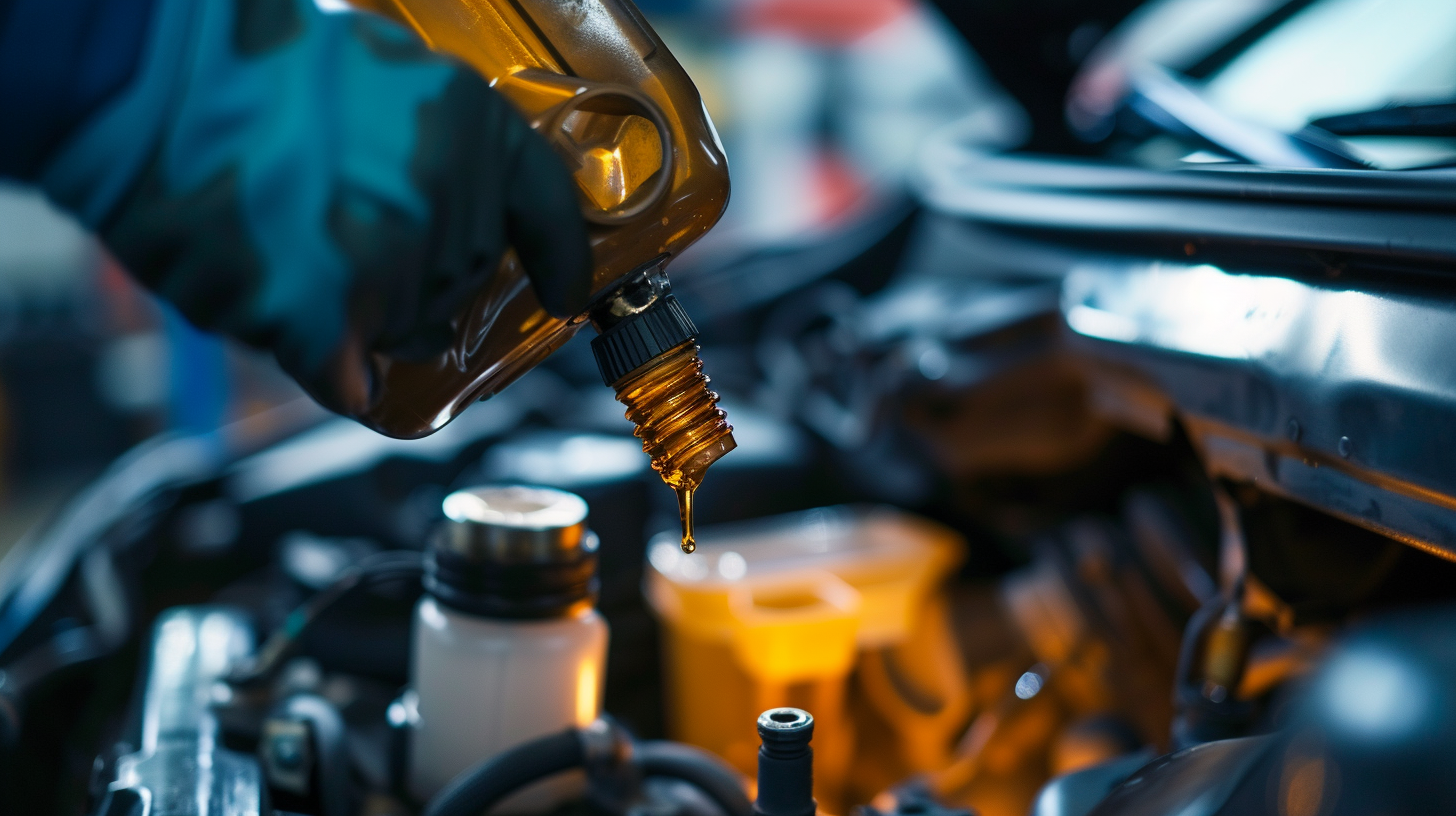Want to ensure your car’s brakes are in top-notch condition? One crucial aspect to consider is maintaining the brake fluid level. In this article, you’ll learn the importance of brake fluid, signs of low levels, and how to check and add brake fluid to your vehicle. We’ll also cover different types of brake fluid, common problems, and even how to bleed your car’s brake system. Keep your brakes in great shape by maintaining optimal brake fluid levels!
Understanding the Importance of Brake Fluid
You should understand the importance of brake fluid in your car. Brake fluid is a critical component of your car’s braking system. It plays a crucial role in transferring the force from your foot on the brake pedal to the brake pads, allowing your car to come to a safe stop. Without proper brake fluid, your brakes may not function effectively, leading to potential accidents and harm. Over time, brake fluid can become contaminated with moisture, dirt, and debris, which can compromise its performance. Regularly checking and maintaining the brake fluid level is essential to ensure the safety and reliability of your braking system. Remember, neglecting the importance of brake fluid can have severe consequences on your car’s overall performance and, more importantly, your safety on the road.
Signs of Low Brake Fluid Levels
Are you noticing warning lights or indicators on your car’s dashboard? Or perhaps your brake pedal feels spongy and doesn’t respond as it should? These could be signs that your brake fluid levels are low. It’s important to pay attention to these warning signs, as low brake fluid can greatly affect your car’s braking performance and safety.
Warning Lights and Indicators
When driving, pay attention to your car’s dashboard for any illuminated warning lights indicating low brake fluid levels. These warning lights are designed to alert you of potential issues with your brake system, including a low brake fluid level. One common warning light to look out for is the brake fluid warning light, which typically looks like an exclamation mark inside a circle. When this light illuminates, it is important to take it seriously and address the issue promptly. Ignoring a low brake fluid level can lead to decreased braking performance and potentially dangerous situations on the road. If you notice this warning light, it is recommended to check your brake fluid level and add more if necessary. Remember, maintaining the proper brake fluid level is crucial for the safety and performance of your vehicle’s braking system.
Spongy Brake Pedal
If your brake pedal feels spongy or soft, and you notice a decrease in braking effectiveness, it could be a sign of low brake fluid levels. Brake fluid is essential for the proper functioning of your car’s braking system. When the brake fluid level is low, it can result in a spongy brake pedal. This means that when you press the brake pedal, it doesn’t feel firm and responsive as it should. Instead, it may feel mushy or require more effort to engage. This can be dangerous as it affects your ability to stop the vehicle quickly and efficiently. Therefore, if you experience a spongy brake pedal, it is crucial to check your brake fluid levels and add more if necessary.
Tools and Materials Needed for Checking Brake Fluid
To check your car’s brake fluid level, you’ll need a few tools and materials. First, you’ll need a clean rag or towel to wipe off any dirt or debris from the brake fluid reservoir cap. This will ensure that no contaminants enter the system. Next, you’ll need a flashlight to help you see inside the reservoir and determine the fluid level. It’s important to have good lighting to accurately assess the condition of the brake fluid. Additionally, you’ll need a brake fluid tester or a dipstick to measure the fluid level. This tool will help you determine whether the fluid needs to be topped up or replaced. Lastly, make sure you have the correct type of brake fluid specified by your vehicle’s manufacturer. Using the wrong type of fluid can damage your braking system.
Step-by-Step Guide to Checking Brake Fluid Level
Before you begin checking the brake fluid level, gather all the necessary tools and materials. First, you will need a clean cloth or towel to wipe off any dirt or debris from the brake fluid reservoir cap. This will ensure that no contaminants enter the system when you open the cap. Next, grab a flashlight or a well-lit area to help you see inside the reservoir. It’s important to have good visibility so you can accurately assess the fluid level. Finally, make sure you have a brake fluid tester or a dipstick to measure the fluid level. These tools will help you determine whether the brake fluid needs to be topped up or replaced. Once you have gathered these materials, you are ready to proceed with checking the brake fluid level.
How to Add Brake Fluid to Your Car
To add brake fluid to your car, you need to be familiar with the different types of brake fluid available. It is important to know the proper fluid levels for your specific vehicle to ensure optimal braking performance. Additionally, being aware of the common signs of low brake fluid can help you identify when it’s time to add more.
Brake Fluid Types
When checking the brake fluid levels in your car, you should always be aware of the different types of brake fluid available. There are two main types of brake fluid that are commonly used in vehicles: DOT 3 and DOT 4. DOT 3 brake fluid is a glycol-based fluid that is suitable for most cars. It has a lower boiling point compared to DOT 4, which means it may not perform as well under extreme conditions. On the other hand, DOT 4 brake fluid is a higher performance fluid that can handle higher temperatures without boiling. It is often used in vehicles that have more demanding braking systems. It is important to check your car’s owner’s manual to determine the recommended brake fluid type for your specific vehicle before adding any fluid.
Proper Fluid Levels
Make sure you always have enough brake fluid in your car’s reservoir to maintain proper fluid levels. It is important to regularly check the brake fluid level and add more if necessary. To add brake fluid to your car, follow these steps. First, locate the brake fluid reservoir, which is usually located near the firewall on the driver’s side of the engine compartment. Next, remove the cap from the reservoir and check the fluid level. If the level is below the recommended minimum mark, you will need to add more fluid. Use a clean funnel to pour the brake fluid into the reservoir, being careful not to overfill it. Once you have added the necessary amount of fluid, securely replace the cap. Remember, maintaining proper brake fluid levels is essential for the safe operation of your car’s brakes.
Common Signs of Low Fluid
If you notice any of these common signs, it’s important to add brake fluid to your car as soon as possible. One of the most obvious signs is a low brake fluid warning light on your dashboard. This light is designed to alert you when the fluid level is too low. Another common sign is a soft or spongy brake pedal. If you have to press the pedal further than usual or it feels less responsive, it could indicate a low brake fluid level. Additionally, if you hear a grinding or squealing noise when you apply the brakes, it may be a sign that the fluid level is low. Lastly, if you notice that your brakes are not as effective as they used to be, it’s likely due to low brake fluid. In any of these cases, it’s important to add brake fluid to your car to ensure your brakes work properly and maintain your safety on the road.
When to Replace Brake Fluid
To ensure optimal braking performance, regularly check your vehicle’s brake fluid level and schedule a replacement when necessary. Brake fluid is a crucial component of your car’s braking system, as it transfers the force from the brake pedal to the brake pads. Over time, brake fluid can become contaminated with moisture, dirt, and debris, which can affect its effectiveness. As a general rule, it is recommended to replace your brake fluid every two years or every 30,000 to 60,000 miles, whichever comes first. However, it is important to consult your vehicle’s owner manual for the manufacturer’s specific recommendations. Additionally, if you notice any signs of brake fluid contamination such as a dark or discolored appearance, it is best to have it replaced promptly to maintain the safety and performance of your brakes.
The Difference Between DOT 3, DOT 4, and DOT 5 Brake Fluid
When it comes to brake fluid, it’s important to know the differences between DOT 3, DOT 4, and DOT 5. DOT 3 is the most common and is suitable for most vehicles. DOT 4 has a higher boiling point, making it ideal for high-performance vehicles or heavy-duty use. DOT 5 is silicone-based and should only be used in vehicles specifically designed for it.
DOT Fluid Comparisons
You should understand the variations between DOT 3, DOT 4, and DOT 5 brake fluids. These three types of brake fluids have different compositions and performance characteristics. DOT 3 brake fluid, the most commonly used type, is glycol-based and has a lower boiling point compared to DOT 4 and DOT 5 fluids. DOT 4 brake fluid, on the other hand, has a higher boiling point and is often used in high-performance vehicles or in situations where the brakes may be subjected to extreme temperatures. DOT 5 brake fluid, silicone-based, is not compatible with other types and should only be used in systems specifically designed for it. It also has a higher boiling point but can absorb moisture over time, leading to brake system corrosion. Understanding these differences will help you choose the right brake fluid for your car and maintain its performance and safety.
Choosing Brake Fluid
First, understand the differences between DOT 3, DOT 4, and DOT 5 brake fluids. The main distinction between these types lies in their chemical composition and performance characteristics. DOT 3 brake fluid is glycol-based and commonly used in most vehicles. It has a lower boiling point compared to DOT 4 and DOT 5 fluids. DOT 4 brake fluid is also glycol-based but has a higher boiling point, making it suitable for high-performance vehicles or those that experience heavy braking. On the other hand, DOT 5 brake fluid is silicone-based and has a higher boiling point than both DOT 3 and DOT 4 fluids. It is typically used in classic cars or motorcycles with older braking systems. It’s crucial to choose the right brake fluid for your vehicle to ensure optimal performance and safety.
Common Brake Fluid Problems and Solutions
Regularly check your brake fluid level to prevent common problems and find appropriate solutions. One common issue is brake fluid contamination. Contaminated brake fluid can lead to reduced braking performance and even brake failure. To solve this problem, you need to flush out the old fluid and replace it with fresh fluid. Another common problem is brake fluid leaks. Leaks can occur due to a damaged brake line or a faulty master cylinder. If you notice any signs of a leak, such as low brake fluid levels or a spongy brake pedal, you should have your vehicle inspected by a mechanic. They will be able to identify the source of the leak and repair it accordingly. Regular maintenance and prompt action can help you avoid these common brake fluid problems.
How to Bleed Your Car’s Brake System
To properly bleed your car’s brake system, you will need a brake bleeding kit. This kit typically consists of a clear hose, a collection bottle, and a wrench or screwdriver to open the bleeder valve. Begin by locating the bleeder valve on each brake caliper or drum cylinder. Attach one end of the clear hose to the bleeder valve and the other end to the collection bottle. Open the bleeder valve using the wrench or screwdriver and have someone press down on the brake pedal. As they press down, air bubbles and old brake fluid will be forced out through the hose into the collection bottle. Repeat this process for each brake until no more air bubbles are present. Remember to periodically check and refill the brake fluid reservoir during the bleeding process to prevent it from running dry.
Tips for Maintaining Optimal Brake Fluid Level
If you want to ensure optimal brake performance, it is important to regularly check and maintain the proper brake fluid level in your car. Here are some tips to help you maintain the optimal brake fluid level. First, locate the brake fluid reservoir under the hood of your car. It is usually a clear plastic container with a cap labeled "brake fluid". Check the fluid level by looking at the markings on the side of the reservoir. If the level is below the minimum mark, add the recommended type of brake fluid until it reaches the maximum mark. Make sure to use the correct type of brake fluid specified in your car’s manual. Lastly, if you notice that the brake fluid level is consistently dropping, it may indicate a leak in the braking system, and you should have it inspected by a professional mechanic.

Lucas is an experienced vehicle technician with hands-on knowledge of almost every car brand available. Throughout his career, Lucas has worked on a wide range of vehicles, including domestic and foreign models, sports cars, trucks, and SUVs.





